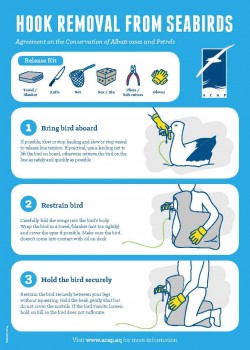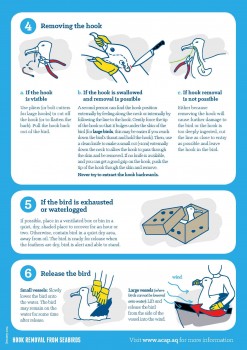ACAP’s Population and Conservation Status Working Group (PaCSWG) closed its meeting yesterday afternoon after two days of fruitful discussions in Uruguay. Not put off by regular thunder claps, lightning and a cloud burst during the day, with consequent intermittent down times of the Internet stopping access to documents, the meeting considered a wide range of subjects. Highlights follow.
The meeting considered a document (SBWG6 Inf 23) which described the use of a powerful laser to deter birds from longlines. The working group discussed methods that might help determine if the use of a laser could damage the retinas of albatrosses and petrels. It was noted that the collection of eyes from birds found dead at colonies or obtained as bycatch would help a proposed physiological study in the United States to address the problem.
A long discussion ensued on the ranking criteria previously developed by ACAP to identify candidate species for inclusion within the Agreement. It was noted the rankings would change when species are split or lumped. Additionally, it was confirmed that the criteria were guidelines only and the nomination of new species remained the prerogative of Parties to the Agreement.
Other matters discussed or noted were the forthcoming ACAP guide to the identification of bycaught seabirds, which includes advice on collection of samples for genetic analysis, recently produced ACAP conservation guideline for hook removal from seabirds, as well as updates to existing conservation guidelines on translocation and on biosecurity (click here).


Hook removal guide
The working group then agreed a work plan which lists the many tasks that it hopes to achieve over the next few years, from collection and collation of data on population trends, distribution and threats, to identifying data gaps and priorities for management that should improve both our understanding and the conservation of these highly threatened species.
Click here for a report on the first day of PaCSWG’s second meeting.
Today the ACAP Seabird Bycatch Working Group (SBWG) will start its three-day meeting, the sixth it has held, with Anton Wolfaardt (United Kingdom) in the Chair.
Selected Literature:
Cooper, J. & Baker, G.B. 2008. Identifying candidate species for inclusion within the Agreement on the Conservation of Albatrosses and Petrels. Marine Ornithology 36: 1-8 & appendices.
John Cooper, ACAP Information Officer, 10 September 2014

 English
English  Français
Français  Español
Español